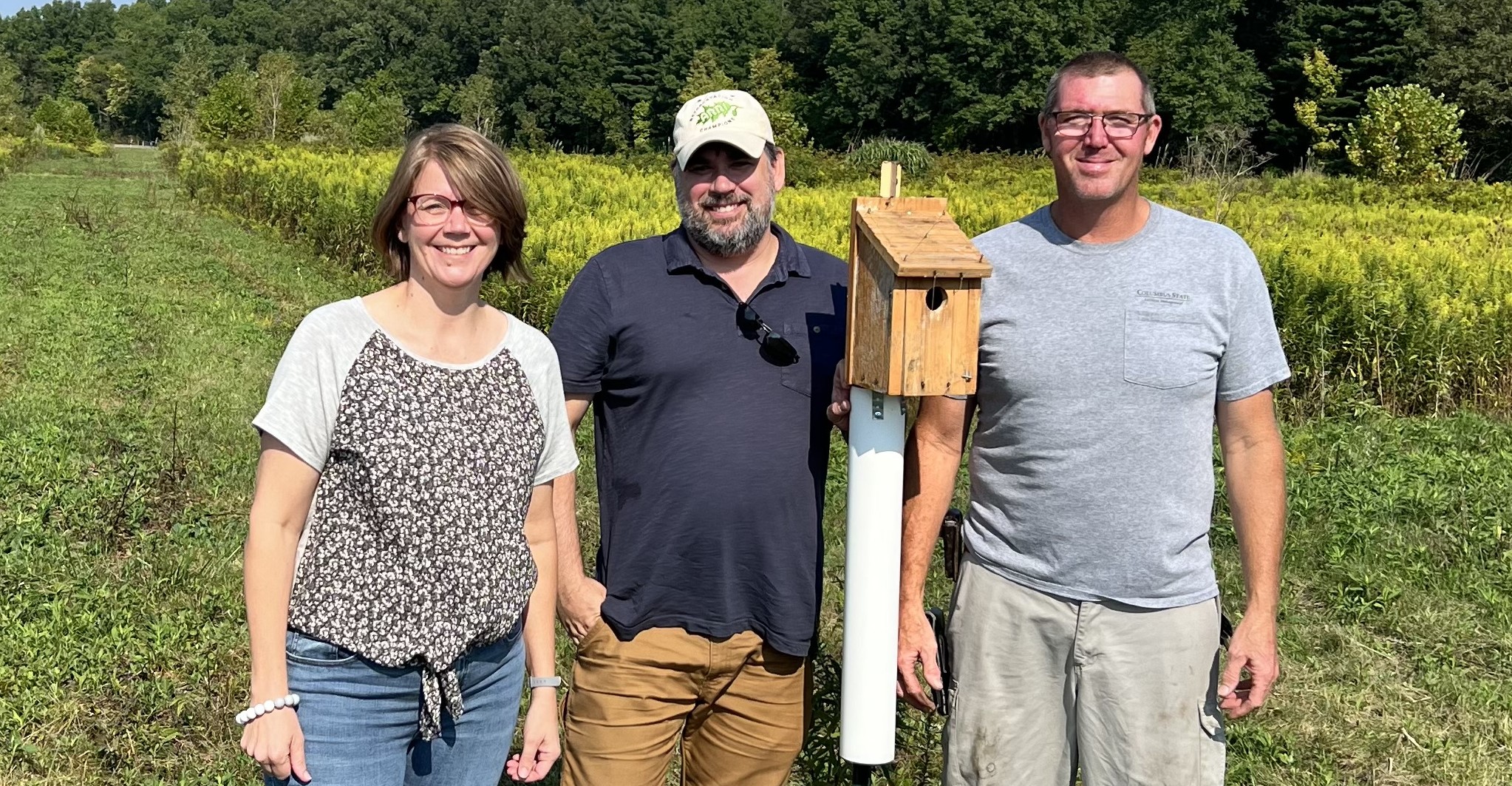Delaware Campus Bluebird conservation project
Campus News | Monday, September 9, 2024

Above, left to right, Gwynne Dilbeck, Ryan Homsher, and Frank Bucy.
Information and data from the Delaware Campus Bluebird Conservation Project are in. The project ran from March 22 through July 22. It was initiated by Ryan Homsher, biology instructor, in partnership with Gwynne Dilbeck, art history instructor, and Delaware Campus Grounds and Facilities Technician Frank Bucy.
Working with Ohio Bluebird Society representative Paula Ziebarth, they set up six nest boxes to support the native bird population in 2023. This year, it was expanded to eight boxes.
“The Delaware Campus occupies an excellent habitat for birds like the Eastern Bluebird, Tree Swallows, Redwing Blackbirds, Eastern Meadowlark, Song Sparrows, Northern Mockingbirds, Killdeer, and other native songbirds,” said Dilbeck. “Up to 90% of the native Bluebird population was lost due to invasive species of House Sparrows and urban development.”
During the March through July nesting season, each nest box is monitored every three to five days. Data is recorded regarding the progress of nesting birds. This data, notes, and images were submitted to NestWatch, Cornell Lab of Ornithology’s nationwide nest-monitoring program that tracks the status and trends in the reproductive biology of birds.
This year, Delaware Reference Librarian Emily Henderson helped the team create a Research Guide on the Library website to provide updated information and resources about the project. In addition, a display of books and resources about birds and wildlife conservation was set up in the Delaware Campus Learning Center, and a display table was set up a conservation project during the nesting season. Students could visit the table for information, look through our spotting scope at one of the nestboxes just outside the learning center window, and see updated data numbers.

Above: One nest as the project progressed on the Delaware Campus.
During the Delaware campus Earth Day event, the team hosted an informational table about the conservation project and took students on a tour of four nest boxes. Students were given an overview of the monitoring and data collection and were able to view the nests and discuss how to visually identify the two types of nesting birds.
Dilbeck says the first egg was laid on April 3 (Eastern Bluebird). The first hatch occurred on April 21. And the last fledgling to leave the nest boxes took place on July 22 (Tree Swallow).
For our eight total nest boxes, there were 14 nesting attempts, 62 eggs, 49 young hatch, and 45 fledglings (fledglings = successfully left the nest). There were seven successful Tree Swallow nests and five successful Eastern Bluebird nests (bluebirds often have two broods in one nesting season).
Tree Swallows had a 100% success rate, from nesting attempt to successful fledging, and the Eastern Bluebirds had an 80% success rate (4 out 5 nest attempts resulted in fledglings; 19 eggs/13 fledglings). Our Tree Swallow rate is above the state average this year, and the Eastern Bluebird rate is in line with the state average. Dilbeck said, “The benefits have not just been visible in the nesting birds, but also in our students, faculty, and staff on campus who are spending a few more minutes looking out the window at our beautiful surrounding habitat and engaging more intimately with our campus location.”
Go to 2024 Archive Go to Campus News